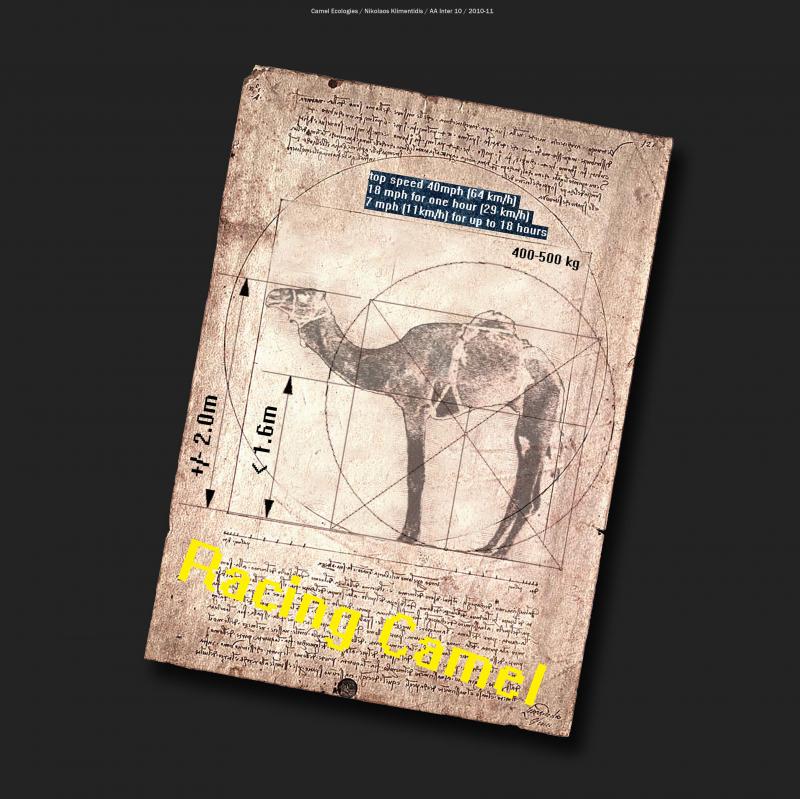
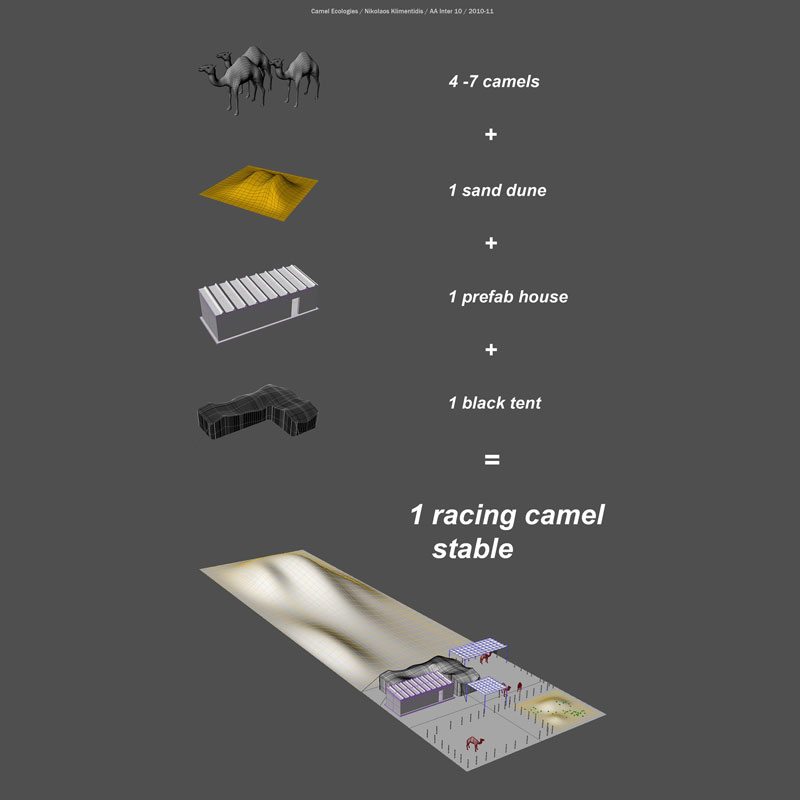
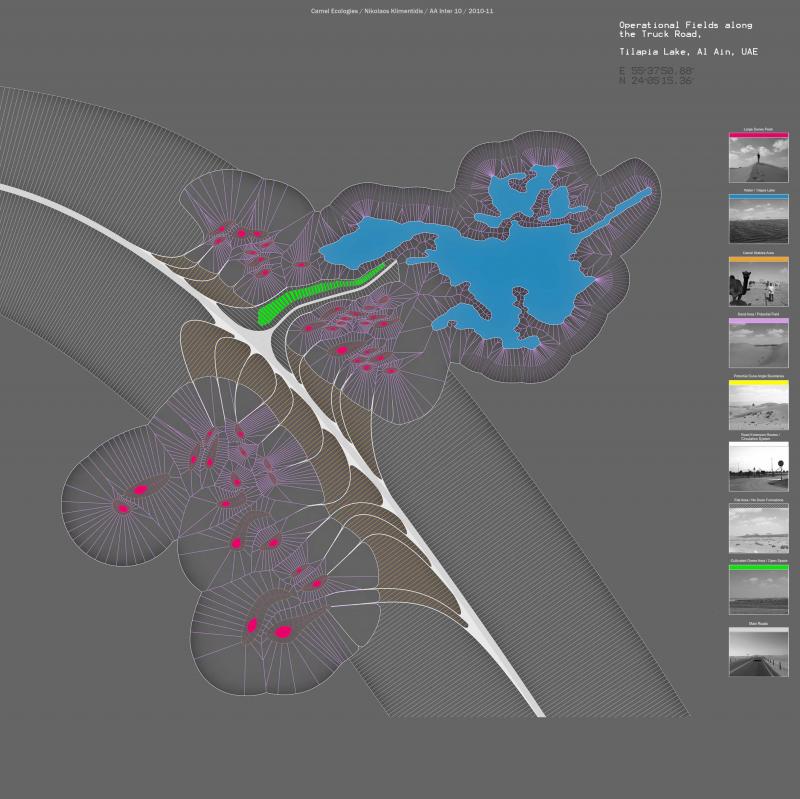
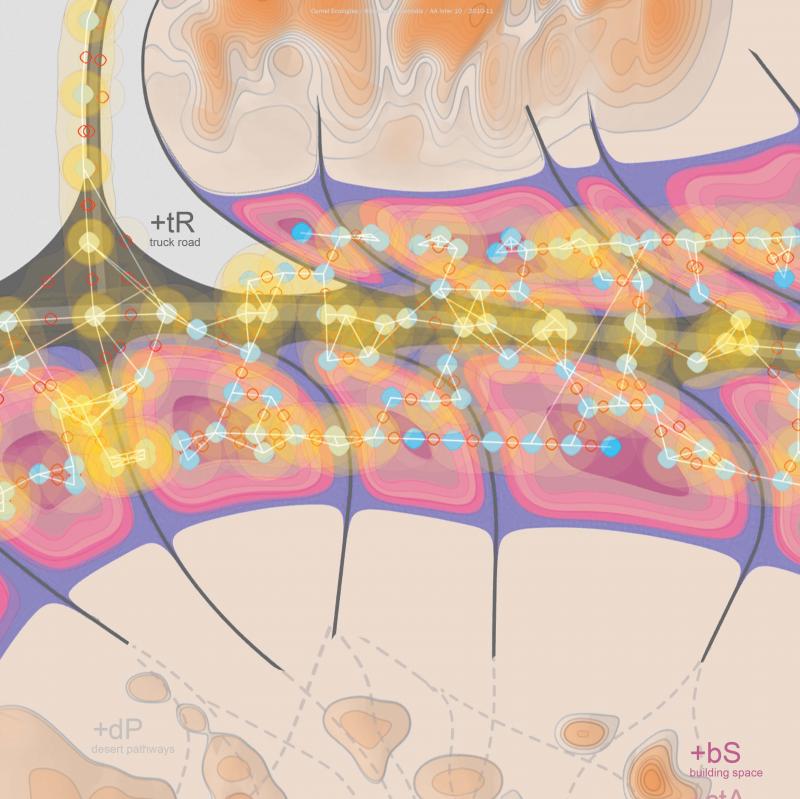
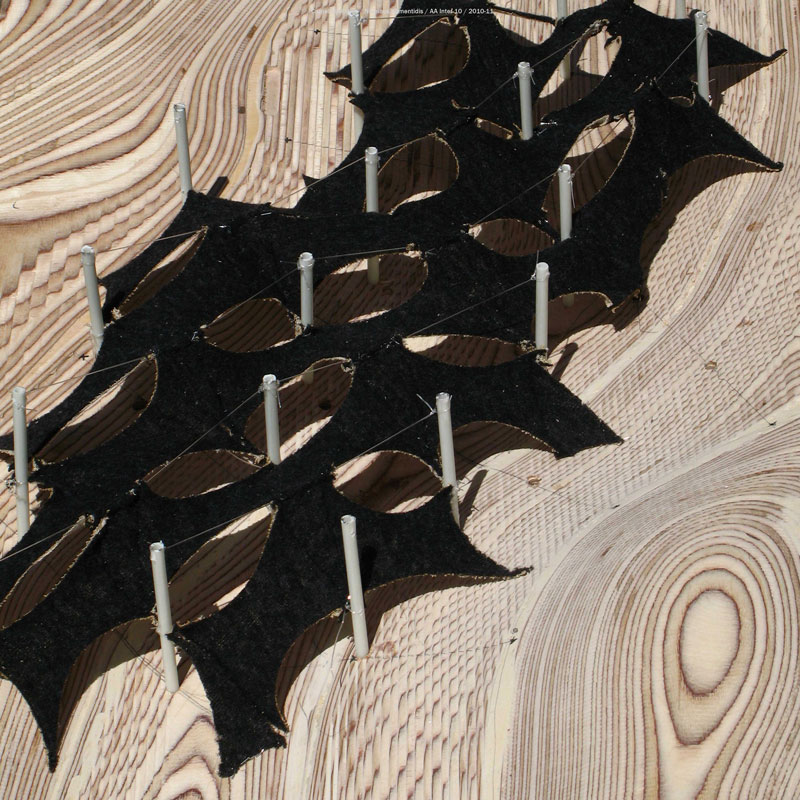
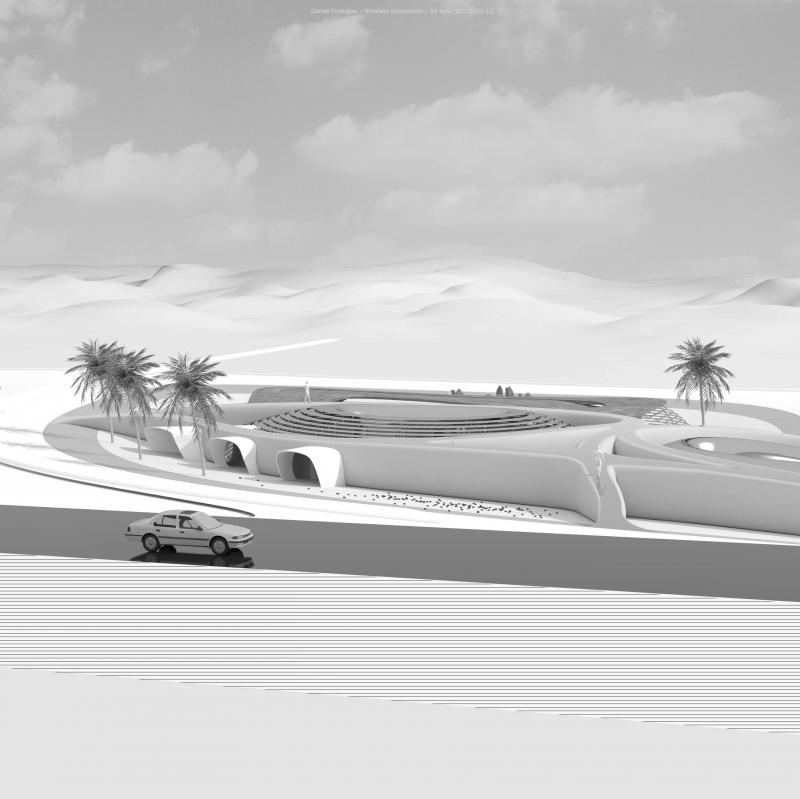
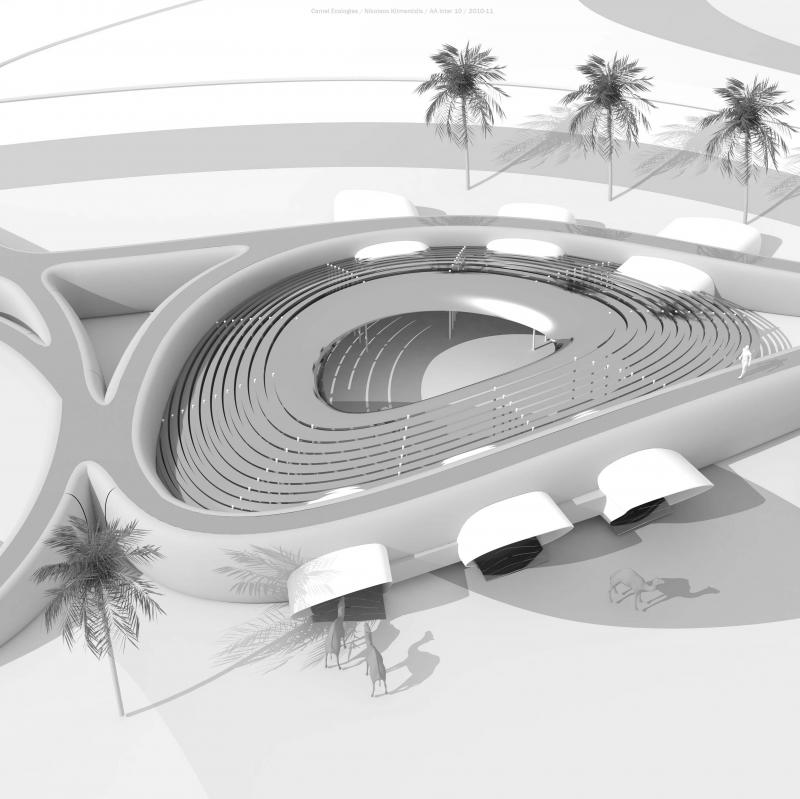
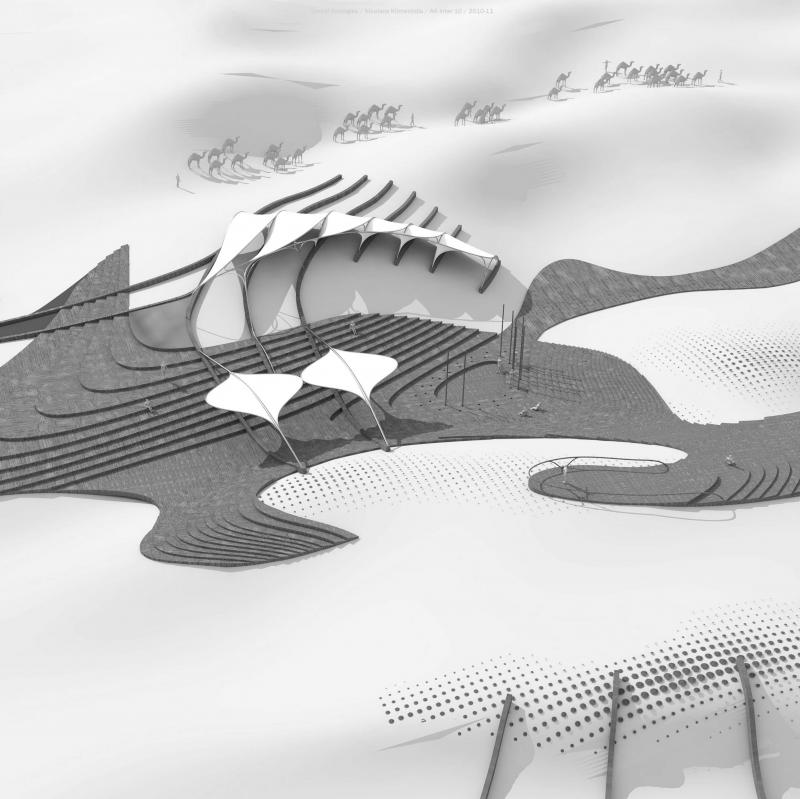
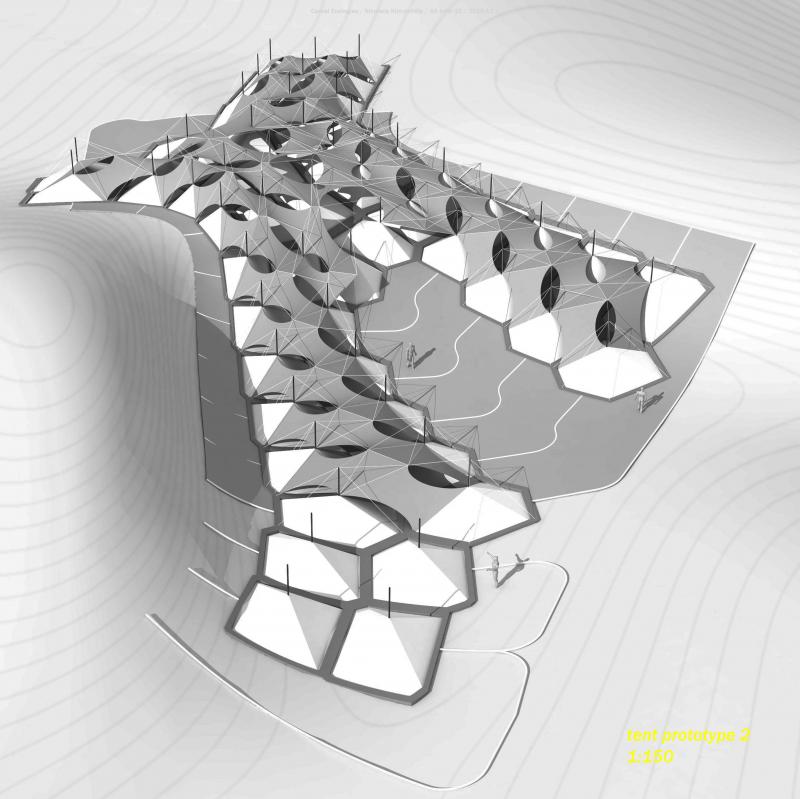
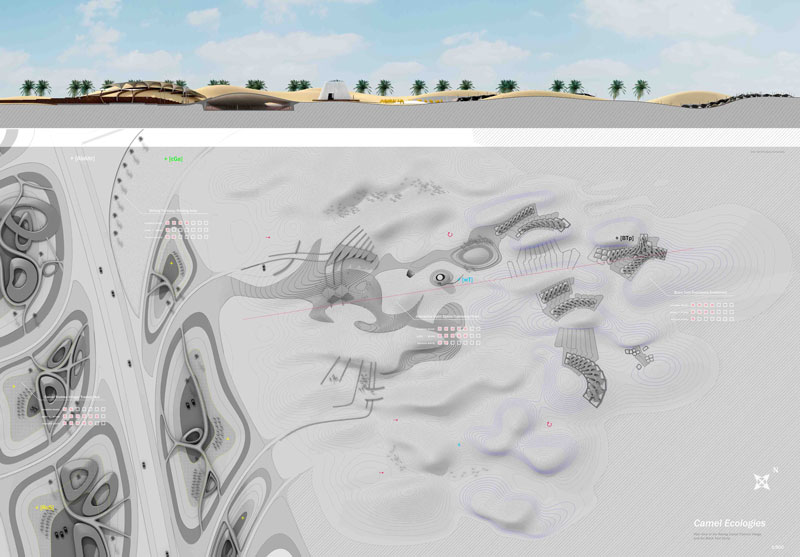
The project attempts to create a village which provides new trading opportunities for the camel breeders in Al Ain and the ability to self-sustain their own dynamic community; by reinventing their narrative and programs within the desert.
The rapid socioeconomic transformations of the United Arab Emitates (UAE) since 1980s have affected many aspects of life including the spatial distribution of both people and camels. Camels have been an integral part of desert cultures for centuries. However, their traditional role as a means of transportation has diminished over the past years. In the era of oil cultural ecology, the camel that once was the all purpose driving machine, gave way to the 4 wheel Toyota. Instead of sailing across the desert sand dunes, the camel, to which Arabs used to refer as safinat al sahra (ship of the desert), is now carried on wheels to various destinations throughout the Gulf, including the racetracks build near the most major cities. This is a frequent sight on the modern highways of the United Arab Emirates, many of which have been purposely fenced with barbed wire for hundrends of miles in order to keep any wandering camels off the fast lanes and therefore reduce the possibility of fatal car accidents in the desert terrain.
Even though the rapid economic and social modernization that was triggered by the oil boom in the 1960s and 1970s led to the replacement of the camels as means of transport, the resulting collapse of traditional economic activities triggered the realization of the significance of preserving and reviving the Arabic traditional culture. As expected , the camel in general and racing camel in particular were at the heart of this heritage revival phenomenon.
Studies results revealed that camels in the UAE were found clustered near racetracks and roads rather than at location with sources of water and grazing areas. Such clustering is unique among countries in the Middle East and North Africa. This clustering is the product of social and economic factors related to camel racing. With prizes as much as US $ 3 million, camel racing in UAE can bestow both prestige and economic benefits to successful owners.
While the city is growing towards the old traditional platform of preserving the cultural aspects of life and maintaining the historical leftovers of the past, the resulting blending of the city grid with the desert dune landscape provides new economic and spatial opportunities for camel breeding and furthermore development of the camel racing sport activities.
Specifically the building development which takes place in the southwest part of the city of Al Ain pushes the camel breeders to become a modern nomadic tribe along the high ways, 20 km outside from the city centre. The main orientating parameter for their movement is the close proximity to the camel racing track of Al Ain.
The translation of the racing camel stables programmatic needs is the starting point of defining the projects prototype structure. According to the reinterpretation of the camel stables system a new network – pathway of reading dune space is created. The formal language of the project attempts to create a connection between the Bedouin Black Tent (nomadic element) and the racing camel stables prototypes (fixed element) which both are an integral part of camel culture.